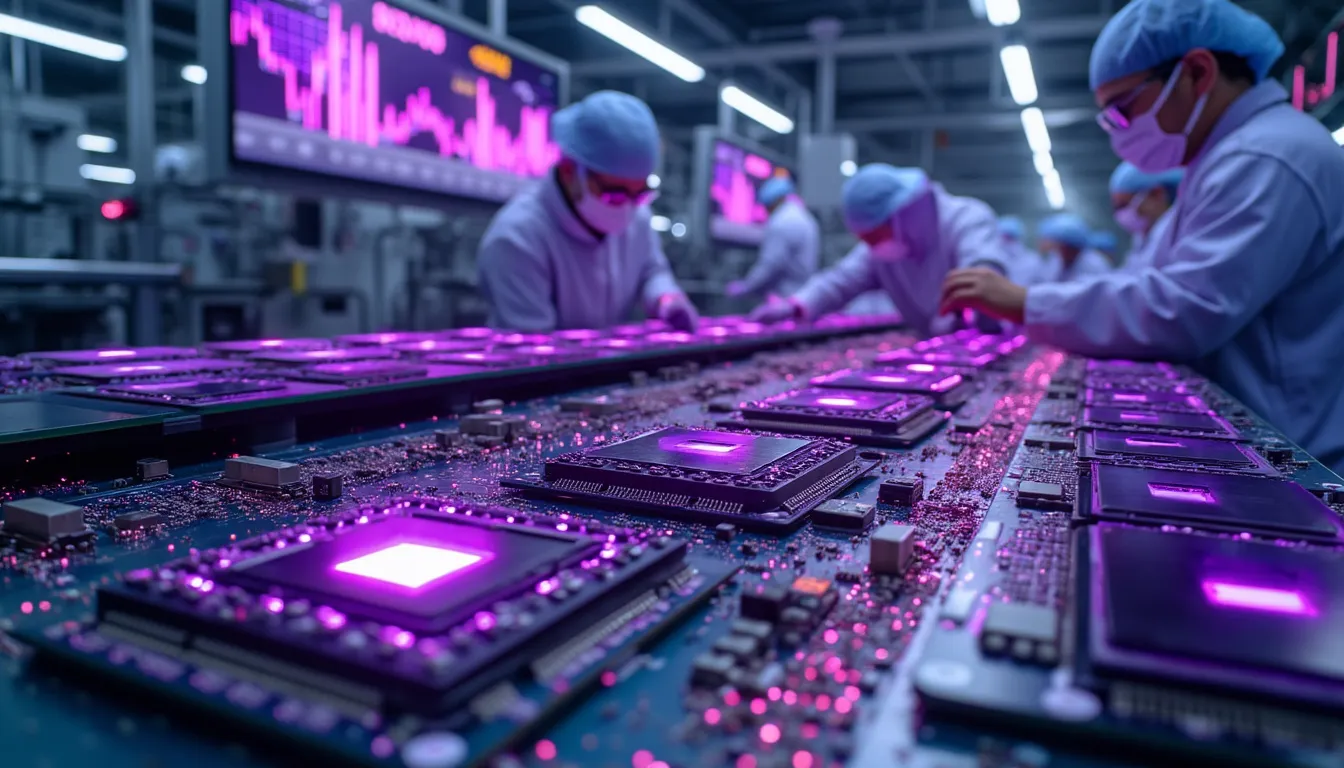Morgan Stanley Raises Teradyne to Equal Weight—How Should Investors Interpret the Signal?
Teradyne (TER), a global leader in automated test equipment for semiconductors, electronics, and industrial automation, just received a notable upgrade from Morgan Stanley—a move that demands the attention of investors. The prestigious Wall Street firm elevated its stance from "Underweight" to "Equal Weight," issuing a $100 price target. This shift follows a quarter marked by both robust earnings and ongoing revenue challenges, set against a volatile semiconductor sector and surging investor interest in AI hardware supply chains. Analyst upgrades like this, especially from influential institutions, often precede or catalyze significant market moves, serving as key signals for portfolio managers and alpha-seekers.
Key Takeaways
Potential downside of 5.3% from the current price to Morgan Stanley’s $100 target.
Stock soared nearly 19% in a single session after Q2 earnings beat, outpacing major indices.
Mixed financial signals: Q2 profits beat estimates, but revenues declined year-over-year.
Morgan Stanley’s upgrade lends credibility, but the new target implies caution rather than outright bullishness.
Recent surge driven by AI chip demand optimism and Teradyne’s continued execution in automated test solutions.
Morgan Stanley’s Shift: Behind the Analyst Upgrade
Morgan Stanley, a bulwark in global investment banking and equity research, commands respect for its rigorous sector analysis and deep institutional reach. Their upgrade from "Underweight" to "Equal Weight" reflects a move from skepticism to a more neutral stance, setting a new price target at $100—below the current market price of $106.71. Notably, the firm’s technology hardware team is known for its disciplined, data-driven approach and a history of well-timed semiconductor calls. This upgrade, though not bullish, marks a clear reduction in perceived downside risk.
While Morgan Stanley’s move does not forecast significant upside, it does signal that the worst-case scenario for Teradyne, in their view, is now less likely. This upgrade may trigger a rebalancing among institutional investors who had previously underweighted the stock, potentially lending short-term support.
Stock Price and Technicals: Volatility, Momentum, and Market Sentiment
Teradyne’s stock has been on a rollercoaster:
Current price: $106.71 (pre-market)
Recent high: $109.77
Q2 earnings day jump: +18.9% (July 30, 2025)
52-week range: $65.77 (April 7, 2025) – $144.16 (January 7, 2025)
Volume spike: July 30 saw nearly 20 million shares trade (vs. 2.8 million avg.)
RSI: 65—indicating strong but not overbought momentum
VWAP (1yr): $101.84—current price is above average cost basis for most holders
This recent surge, following an earnings beat, signals that investors are recalibrating their expectations for Teradyne’s future growth trajectory, particularly as AI-driven demand for chip testing accelerates.
Company Fundamentals: Q2 Earnings in Focus
Teradyne’s core business centers on providing automated test equipment (ATE) for semiconductors—a critical bottleneck in today’s AI and advanced electronics supply chains. The company also has a growing foothold in industrial automation and robotics, serving sectors from automotive to logistics.
Q2 2025 Highlights:
Earnings beat: Surpassed consensus profit estimates
Revenue decline: Despite the beat, revenues were down year-over-year, reflecting cyclical industry headwinds
Management commentary: Focused on AI, automotive, and memory test demand as key growth drivers
News and Catalysts: Why Did the Stock Spike?
The market’s reaction to Teradyne’s Q2 print was swift and dramatic:
July 30, 2025: Shares soared nearly 19% after Q2 earnings and guidance beat the mid-point of expectations (Motley Fool).
AI chip test demand: Investors are betting that Teradyne will play a pivotal role as Nvidia, AMD, and other AI chipmakers ramp production.
"TER's second-quarter earnings and revenues surpass the mid-point of its guidance range." — Zacks Investment Research (Zacks)
Despite the positive profit surprise, management acknowledged ongoing revenue pressure, a reminder that chip cycles remain unpredictable even amid a secular AI tailwind.
Risk/Reward: Interpreting the Price Target and Market Response
Morgan Stanley’s $100 target actually sits about 5.3% below the current price, suggesting the stock may have overshot on post-earnings optimism. This is a classic case of an analyst upgrade reflecting a removal of the bear case, rather than outright bullishness. The key message: downside risk has diminished, but upside is now more limited in the near term.
Potential downside: 5.3% relative to current price
Market sentiment: Still positive, but possibly ahead of fundamentals after the earnings rally
Technical indicators: RSI at 65 (approaching overbought), 1-year price above VWAP
Strategic Considerations for Investors
Short-term traders: The surge may be followed by consolidation as the market digests mixed signals (beat on profit, decline in revenue, neutral analyst call).
Long-term holders: Teradyne remains exposed to secular AI and automation trends, but cyclical risks are material. Monitor demand trends in semiconductor ATE and progress in industrial robotics.
Portfolio managers: Morgan Stanley’s upgrade could serve as a catalyst for rebalancing, especially among those previously underweight the name.
Conclusion: A Cautious Green Light—But Not a Go Signal
Morgan Stanley’s upgrade marks a material shift in sentiment, but with a price target below the current price, this is no unqualified endorsement. The combination of a powerful earnings rally, sector tailwinds from AI, and a major analyst firm’s reappraisal suggest Teradyne has moved out of the penalty box—but not yet into the fast lane. Investors should weigh the recent surge against the firm’s revised risk/reward calculus, remaining vigilant for both sector tailwinds and cyclical turbulence.

.svg)
.svg)
.svg)
.svg)

.svg)

.svg)
















